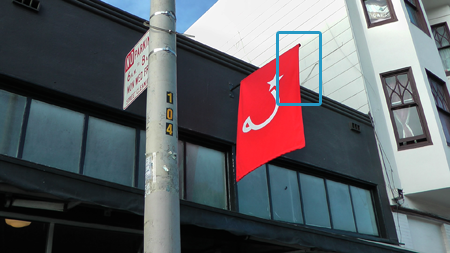InDepth: Choosing a Post Production Codec
One of the most common questions we receive from ClipWrap users is “Which format should I use?” ClipWrap provides users a variety of choices beyond rewrapping. You can choose Apple Intermediate, DV, DVCProHD, HDV, along with a pile of variations on ProRes and Avid DNxHD. So which one is right? Well, that all depends.
First, let’s talk rewrapping. If you’re working with HDV content, using Final Cut Pro, and don’t plan to be incorporating higher end codecs into your project, stick with rewrapping. Final Cut Pro is well-optimized for the rewrapped HDV that ClipWrap generates from your M2T files.
If you’re working with AVCHD, the choice is a little more complicated. Final Cut Pro will play rewrapped AVCHD files, but it’ll secretly hate you for it. Because of the high CPU demands of the AVCHD H.264 format, Final Cut will chug and churn a bit, and you’ll lose the ability to use the realtime effects features. For these reasons, we recommend AVCHD users use rewraps for dailies, sharing with producers, or other forms of simple playback. For editing, go with a transcode.
Depending on your computer, you’ll have 2 or more choices for transcoding. For every season, there is a reason, and for every workflow, there is a codec. While we can’t tell you how to handle every situation, we’ll cover some basics.
DV, HDV, DVCProHD
These formats have long beards and yell at kids to get off their lawn. They’re a bit creaky, but they’re reliable, known quantities. DV is a standard definition format, so only choose that one if you’ll be bringing your HD footage into a standard definition project. HDV and DVCProHD are both HD codecs, but both are relatively aggressive in terms of compression. With either codec, there’s the possibility that you’ll introduce artifacts into your footage, and you’ll also see a noticeable drop in resolution or blurring. This is because HDV internally stores footage at 1440x1080, while DVCProHD stores footage at 1280x1080. Most AVCHD cameras now capture “full raster” video, at 1920x1080. This difference in pixel aspect ratios means you’re losing up to 35% of your horizontal resolution, and ClipWrap has to resize your frame to fit this lower res container. Both are good choices for bringing new content into an existing project, but for new projects, we’d recommend steering clear.
Apple Intermediate
Apple Intermediate Codec is an intra-frame (more on this in a future blog post) codec designed for post production. It provides high speed, low overhead decoding, at the expense of a bit of disk space. Most Macintoshes have this codec installed because it’s included with the iLife suite. It is supported by iMovie, Final Cut Express, and Final Cut Pro.
Apple Intermediate (AIC) is the go-to choice for most “prosumer” post-production. While AIC can’t deliver quite the level of quality that Apple ProRes and Avid DNxHD offer, it’s often a often a better balance of disk size to quality. When working with HDV or AVCHD, your footage has already been squeezed to the edge of acceptability by the camera. AIC is far less aggressive than either acquisition codec, and is unlikely to introduce new artifacts to your footage.
As mentioned, the tradeoff with AIC is disk space. An hour of AVCHD footage might take up 10 gigabytes of disk space. An hour of AIC will be closer to 50. Not a small difference. For this reason, some users will choose to only transcode the footage they know they’ll be using, rather than transcoding each and every second they shoot.
Apple ProRes and Avid DNxHD
The monocle and tophat wearing members of the codec club, ProRes and DNxHD are designed for high end production. Both were introduced as an alternative to uncompressed video. Rather than needing 200 megabytes per second of video, they promised the same quality in only 30 megabytes per second. The advertisements promised us that we’d be editing our next feature film from the window seat of a 747. And we do.
In terms of quality, both codecs deliver. While there are situations in which you can measure a numerical quality difference between the source and encoded files, the differences are visually imperceptible. Both codecs are pretty good when it comes to CPU overhead as well. They’re more demanding than AIC, but less demanding than rewrapped files.
So, why wouldn’t we just stick to these formats for everything? Well, it turns out that 30 megabytes per second is still quite a bit. Burning through 2 gigabytes for every minute of footage will eat up a harddrive pretty quickly. Even more significant, many drives - particularly laptop drives - can’t sustain a 30 megabyte per second read or write. That means you’ll experience dropped frames and stuttering playback.
More significantly, for footage that originates in AVCHD or HDV, there’s no quality to be gained by using these formats. Remember, your camera did all the damage during the recording - throwing extra bits at the files for post production can’t enhance the quality.
We include these formats in ClipWrap for users who need to bring HDV or AVCHD footage into projects that primarily consist of ProRes or DNxHD footage. Sticking to one format for a project is always preferable over mixing and matching, so users will sometimes choose to convert their AVCHD B-roll to ProRes or DNxHD to cut it against their uncompressed-originated, ProRes-captured footage.
Quality Comparison
You sound like you’re not convinced. You’re thinking “but my footage is beautiful, I shall transcode everything to ProRes 444!” We shot a few clips around town at 1080p60 on a Panasonic TM700. The source MTS files were converted to a variety of formats that ClipWrap supports, and blown up, as highlighted by the blue squares.

You can click between them to see the differences, or lack thereof. What you’ll notice is that most compression artifacts come from the original AVCHD compression process. The AIC and ProRes are indistinguishable.
| ReWrap |
 ReWrap ReWrap |
| AIC | |
| ProRes | |
| HDV | |
| DVCProHD |

On the second shot, you can see the artifacting in the sky, which is being smoothed out by the more aggressive HDV and DVCProHD codecs. Again, you can see that the ProRes and AIC are essentially identical to the source content. Stick to AIC, stay happy. function switchImages(filename, filelabel,imagename) {document.getElementById(imagename+”label”).innerHTML = filelabel;document.getElementById(imagename+”image”).src= “/assets/blogimages/” + filename + “.png”;}
| ReWrap |
 ReWrap ReWrap |
| AIC | |
| ProRes | |
| HDV | |
| DVCProHD |
-colin